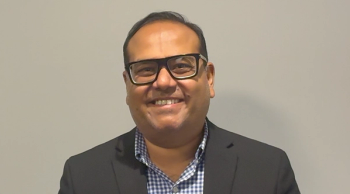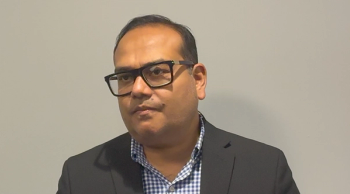
Oncology NEWS International
- Oncology NEWS International Vol 5 No 10
- Volume 5
- Issue 10
Optimal Duration of Tamoxifen Requires More Investigation
An expert panel of nine international cancer researchers and practicing oncolo-gists met in Boston to discuss the past, present, and future uses of antiestrogens in the treatment of breast cancer. This article represents the first in a series of reports based on the symposium presentations that will be featured in subsequent issues of Oncology News International.The symposium was sponsored by Zeneca Pharmaceuticals.
ABSTRACT: An expert panel of nine international cancer researchers and practicing oncolo-gists met in Boston to discuss the past, present, and future uses of antiestrogens in the treatment of breast cancer. This article represents the first in a series of reports based on the symposium presentations that will be featured in subsequent issues of Oncology News International.The symposium was sponsored by Zeneca Pharmaceuticals.
BOSTON--Comments made at the 1996 ASCO annual meeting in supportof a limitation on the duration of tamoxifen (Nolvadex) therapyto 5 years in women with early breast cancer came under fire fromseveral roundtable participants. The overall consensus was thatmore study is needed before the optimal duration of tamoxifencan be stated with certainty.
The studies discussed at ASCO, a clinical trial conducted by theNational Surgical Adjuvant Breast and Bowel Project (NSABP-14)and a small Scottish study, both showed no further benefit of10 years of tamoxifen over 5 years. These trial results led theNational Cancer Institute to publish a clinical alert advisingclinicians to limit tamoxifen use to 5 years in women with earlybreast cancer.
In the NSABP-14 trial, nearly 1,200 premenopausal and postmenopausalwomen who had been taking tamoxifen for 5 years and had not suffereda relapse were re-randomized to either a second 5 years of theantiestrogen (20 mg/day) or placebo. After 4 years of follow-up,the disease-free survival rate in those assigned to 10 years oftamoxifen was 86%, compared with 92% in those given the drug foronly 5 years.
One of the interpretations drawn from these data is that 10 yearsof tamoxifen therapy is inferior to 5 years, said Nicholas J.Robert, MD, of Georgetown Medical School and Fairfax Hospital,Falls Church, Va. "I think that conclusion may be prematurein terms of having data that's still too young to interpret,"he said.
In Dr. Robert's view, one of the more disturbing issues raisedby NSABP-14 was the apparent lack of protection against contralateralbreast cancer afforded by 10 years of tamoxifen, coupled witha slight increase in endometrial cancer.
"So one of the conclusions of the NSABP study is that fornode-negative women, giving tamoxifen for more than 5 years didnot generate any better outcome for patients," Dr. Robertsaid.
Node-Positive Patients
Although the 5-year limitation seems warranted in node-negativepatients, whether a longer duration of therapy may be beneficialin node-positive patients is still an open question, Dr. Robertstated.
These sentiments were echoed by Bonnie S. Reichman, MD, of CornellUniversity Medical College and New York Hospital. "For node-negativepatients, I think the answer is relatively clear that there maybe no further benefit to continuing beyond 5 years," shesaid. "However, in the node-positive patients, and thereare different subgroups within that set of patients, the answeris less clear. And I think it has to be handled on a case-to-casebasis."
V. Craig Jordan, PhD, DSc, of Northwestern University, agreedwith the need to make individual determinations on tamoxifen duration.In a review published simultaneously with the NCI clinical alert,Dr. Jordan and colleagues noted that "the data are not allin yet to give an absolute indication on a patient-by-patientbasis." They advocate examining risk factors in each patientin order to make a decision "because the published literaturereally doesn't support a duration of action of tamoxifen at thispoint."
Patients' wishes also must be factored into the decision, Dr.Reichman commented. For some patients, remaining on tamoxifenis a proactive step that affords them a certain level of comfort,which she characterized as the "tamoxifen security blanket."
John H. Glick, MD, of the University of Pennsylvania Cancer Centerand the Hospital of the University of Pennsylvania, said thatmany patients who have been taking tamoxifen for long periodshave four or more positive nodes. "If you view those patientsas really having had metastatic disease, you can make an argumentfor continuing tamoxifen in those particular patients becausetheir relapse rate over time is still great."
The possibility that this practice may lead to tamoxifen resistanceraises an "interesting question," Dr. Glick said. Nonetheless,in his experience, many patients with four or more diseased nodeswho have received chemotherapy and have been on tamoxifen fora long time without uncomfortable side effects want to continuetaking the antiestrogen for more than 5 years and even beyond10 years.
The impact on an individual patient of developing metastatic diseaseafter being free of disease for a long period should not be minimized,Dr. Glick said. "A person who has been free of cancer for10 years and then gets a metastasis and becomes a palliative patienthas that sword of Damocles hanging not distantly but right overher head. That's why I believe prolonged periods of disease-freesurvival are advantageous in their own right."
Dissenting with these comments, Anthony Howell, MD, of ChristieHospital, Manchester, England, emphasized that the relativelysmall Scottish trial, like NSABP-14, showed that 10 years of tamoxifenprovides no additional effect over that afforded by 5 years oftherapy.
"To my mind, the question is still open," Dr. Howellsaid. He added that appropriate patients should be encouragedto enter the ongoing trials aimed at answering the duration question,such as the Adjuvant Tamoxifen Longer Against Shorter (ATLAS)trial, a worldwide study planned for 20,000 breast cancer patients.
Agreeing that there needs to be a stronger database, Dr. Jordanpointed out that presentations of the NSABP-14 results lump premenopausaland postmenopausal women together. However, when one looks atthe two groups separately, premenopausal women fare much betterthan postmenopausal women.
"It may be, even though there are few events, that 10 yearsis terrific in a pre-menopausal group and maybe 6, 8, or whateveris going to be appropriate in a postmenopausal group," hesaid.
With regard to the Scottish study, Dr. Jordan noted that bothestrogen receptor (ER)-positive and ER-negative women were included.He wondered whether the premature failures of tamoxifen occurredmore often in the ER-negative than in the ER-positive group.
On other hand, Dr. Robert expressed concern over the increasein recurrences seen in both the NSABP and Scottish trials amongwomen who took tamoxifen for 10 years. "One certainly canchallenge that the database is not sufficient. Nonetheless, wherein breast cancer biology do we see a qualitative change that isdifferent between subsets?" he wondered.
Yet another unresolved question relates to the possibility ofstopping tam-oxifen after 5 years and then reinstituting treatmentif the disease recurs. Anecdotal reports have suggested that itmay be possible to rechallenge such patients with tamoxifen andinduce a second response, Dr. Jordan noted. Conducting a formalstudy of this concept may eventually show whether the approachis valid, he said.
Until further data resolve all these issues, "my view wouldbe that you may be able to get excellent mileage out of tam-oxifen,"Dr. Jordan said, "but you may not be able to get that mileageforever."
SIDEBAR
Roundtable Participants
Chairperson: V. Craig Jordan, PhD, DSc, Robert H. LurieBreast Cancer Research Program, Northwestern University MedicalSchool, Chicago
Richard R. Barakat, MD, Cornell University Medical Collegeand
Memorial Sloan-Kettering Cancer Center, New York City
John H. Glick, MD, University of Pennsylvania Cancer Centerand
Hospital of the University of Pennsylvania, Philadelphia
Anthony Howell, MD, Christie Hospital NHS Trust, Manchester,England
Robert W. Morgan, MD, Environmental Health Strategies,Inc., Redwood City, California
Joseph Ragaz, MD, University of British Columbia Schoolof Medicine and British Columbia Cancer Agency, Vancouver, BritishColumbia
Bonnie S. Reichman, MD, Cornell University Medical Collegeand New York Hospital, New York City
Nicholas J. Robert, MD, Georgetown Medical School, Washington,DC, and
Fairfax Hospital, Falls Church, Virginia
James A. Swenberg, DVM, PhD, University of North CarolinaSchool of Medicine and School of Public Health, Chapel Hill
Articles in this issue
almost 26 years ago
Anesthetic Interventions Rise When Anesthesiologists Join the Pain Teamalmost 26 years ago
Worldwide UN Survey Shows Many Impediments to Morphine Availabilityalmost 26 years ago
Case-Based Pain Curriculum Used in Canadian Schoolsalmost 26 years ago
Pain Descriptions May Predict Presence of Neuropathic Painalmost 26 years ago
Neurotoxicity Related to High-Dose Opioid Therapy Can Be ManagedNewsletter
Stay up to date on recent advances in the multidisciplinary approach to cancer.























































































